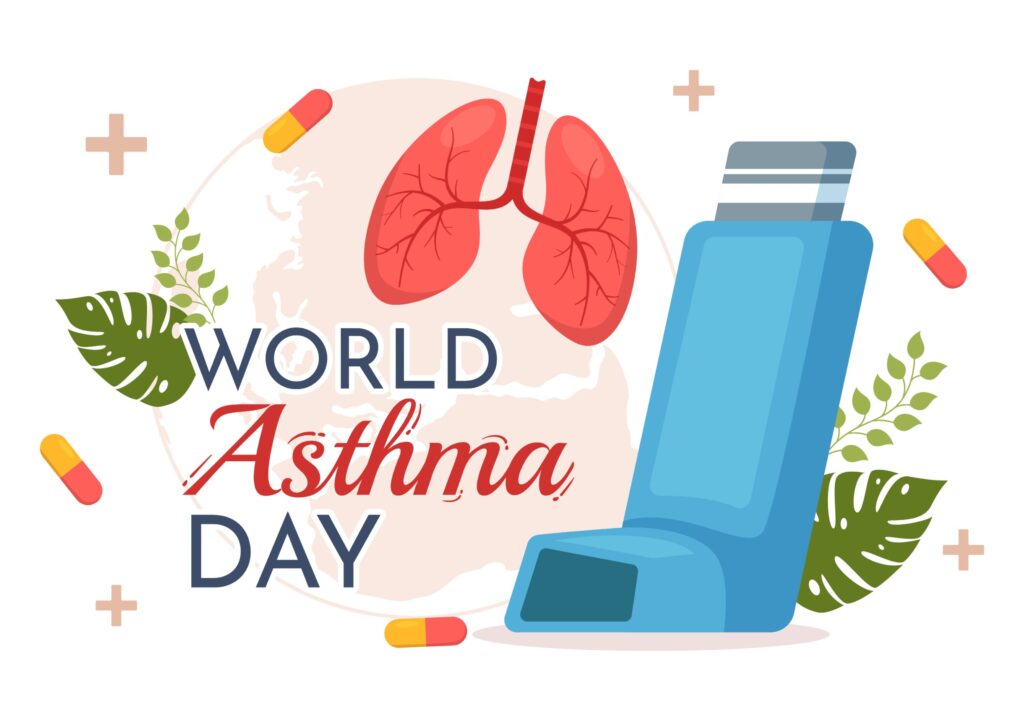It’s the first Tuesday of May, and in line with the world calendar, it’s World Asthma Day. You probably have a friend or someone you know who carries that green inhaler around or is suddenly rushed to the clinic because you decided to bleach palm oil in the room. They told you they’re asthmatic: they can’t breathe. You don’t know what the fuss is about. Or you do, but you don’t know what to do. This article is for you. Welcome back to the Emergency series.
What is Asthma?
Asthma is a chronic (long-term) condition that makes breathing difficult by causing inflammation and narrowing of the airways, along with excess mucus production. It leads to symptoms like:
- Coughing
- Wheezing
- Shortness of breath
- Chest tightness
- Difficulty speaking
These symptoms can vary in severity, come and go, or worsen over time. An asthma attack is a sudden worsening of these symptoms. Asthma has no cure, but it can be managed long-term with trigger avoidance, inhaled corticosteroids, and bronchodilators like Salbutamol.
Scenario
So, it’s a regular Friday night for you and Titilayo. You’re headed to a party, hyped about how you’re going to bust some moves, when you pass by the suya man’s spot. The smoke hits you. You both cough, splutter, and wave it away. A few minutes later, you notice Titi is no longer responding to your gist. Just a few distracted “mmhm”s and “hmm”s. Then it hits you: she’s asthmatic. The smoke might have triggered something. You glance over and see she looks distressed. She’s coughing and soon starts wheezing. You ask if she can breathe but she simply waves her hand no. Her wheezing gets louder. You’ve confirmed it: Titilayo is having an asthma attack.
What to Do?
There are three key first-aid steps when someone is having an asthma attack:
1. Help her use her inhaler.
Sit Titi down on a bench, a ledge, or the floor–anywhere comfortable. Help her bring out her inhaler (remind her to always keep it close!). The most common type is an aerosol canister in a green case. Uncap it and hand it to her. If she’s too panicked or shaky to use it properly, place the mouthpiece gently between her lips and press the top of the canister to release the gas. Give 1–2 puffs at a time, waiting 30 seconds to 1 minute between each puff, until she signals improvement.
If she doesn’t have her inhaler with her (please, Titi, always have it on you), move to step 3.
2. Reassure her and monitor.
Stay calm and keep reassuring her. Encourage her to take slow breaths and keep using her inhaler. A mild asthma attack usually improves within a few minutes. If there’s no inhaler, there’s no improvement, she’s getting worse, can’t talk, or is exhausted, then proceed to the next step.
3. Get emergency help.
Call for help immediately: get her to clinic yourself or call an ambulance. Do not leave her. If you can’t call an ambulance or flag a taxi down yourself, ask someone nearby to do so. While waiting, have her keep using the inhaler every few minutes if she can tolerate it.Go with her to the clinic where she’ll be treated, and monitored. When she’s better, take her home to recover because an attack could recur. Keep her away from triggers and monitor her closely. There’s no party for Titi tonight.

